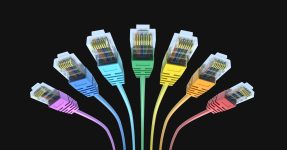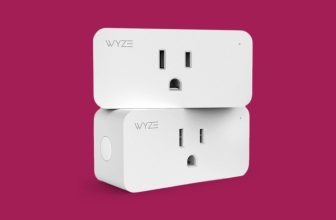
What is Ethernet? Everything You Need to Know About Wired Networks
Before Wi-Fi grew to become ubiquitous, Ethernet was the way in which to hyperlink gadgets collectively. By operating Ethernet cables in an area space community (LAN) or huge space community (WAN), you might ship site visitors forwards and backwards. Ethernet permits machines to acknowledge information meant for them and to ship information to different gadgets. It is nonetheless extensively used as a result of sending information alongside cables is quicker, extra dependable, and safer than sending it as radio waves, as Wi-Fi does.
If you need to get the most effective out of your web connection, Ethernet is nonetheless a good way to do it, and it’s an apparent selection for any group that prizes excessive pace, safety, and reliability. Here’s the whole lot you want to learn about Ethernet. You may need to dip into our guides on How to Buy a Router, Best Wi-Fi Routers, and Best Mesh Systems.
Special supply for Gear readers: Get a 1-Year Subscription to WIRED for $5 ($25 off). This contains limitless entry to WIRED.com and our print journal (if you would like). Subscriptions assist fund the work we do every single day.
History of Ethernet
First created in 1973 by a bunch of Xerox Palo Alto Research Center (PARC) engineers, together with Robert Metcalfe and David Boggs, Ethernet allowed individuals to join a number of computer systems in an area space community (LAN). Ethernet supplied a algorithm for sending information forwards and backwards between particular machines quickly. The title Ethernet was impressed by luminiferous ether.
To massively simplify the early historical past of Ethernet, Xerox relinquished its trademark on the Ethernet title, and the Institute of Electrical and Electronics Engineers (IEEE) formalized the 802.3 normal (in any other case referred to as Ethernet) in 1983. Other applied sciences existed, however Ethernet quickly grew to become the dominant normal as a result of it was open, so networking tools was out there from a number of producers. Ethernet was additionally simple to improve, with every model providing backward compatibility.
The first official Ethernet launch supported speeds of up to 10 Mbps. Then 100 Mbps Fast Ethernet got here alongside in 1995, and Gigabit Ethernet adopted in 1999. By 2002, 10-Gigabit Ethernet was potential. Power over Ethernet, or PoE, which enabled gadgets to use a single cable for energy and networking, landed in 2003. Work has continued to enhance Ethernet capabilities since, reaching 40 Gbps in 2010, then 100 Gbps later the identical yr. Research continues, however 40 Gbps is the highest pace out there to be used within the house at the moment, and that’s far more than most of us want.
Ethernet and Wi-Fi
Even when you have solely ever used Wi-Fi, you’re in all probability acquainted with Ethernet plugs and cables. The cable that connects your modem to your Wi-Fi router or fundamental mesh unit is doubtless an Ethernet cable with an RJ45 connector. Ethernet gives three fundamental benefits over Wi-Fi: It is quicker, extra steady, and safer. But it requires you to run cables between gadgets, and related gadgets should have Ethernet ports. Wiring up a community can be complicated and dear.
Ultimately, the pace you get will all the time be restricted by the lowest-rated part, whether or not that’s the cable, port, or change. Let’s take a better have a look at all three.
Ethernet Cables
Photograph: Amazon
There are seven classes of Ethernet cable in use at the moment, providing numerous most bandwidth and information charges.






